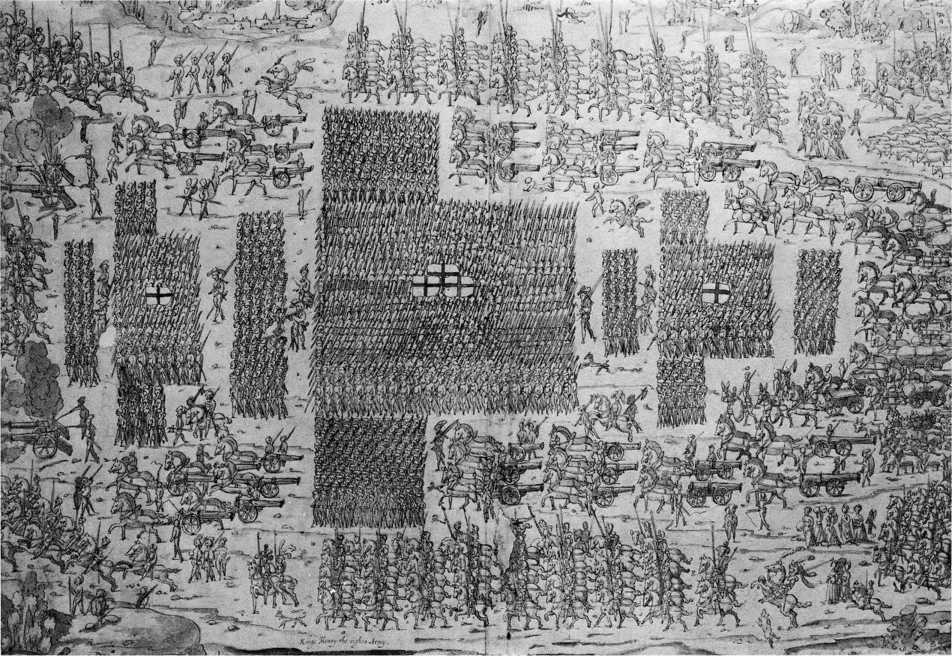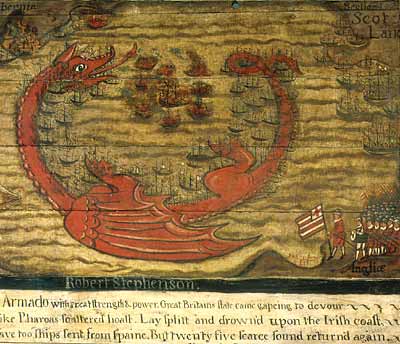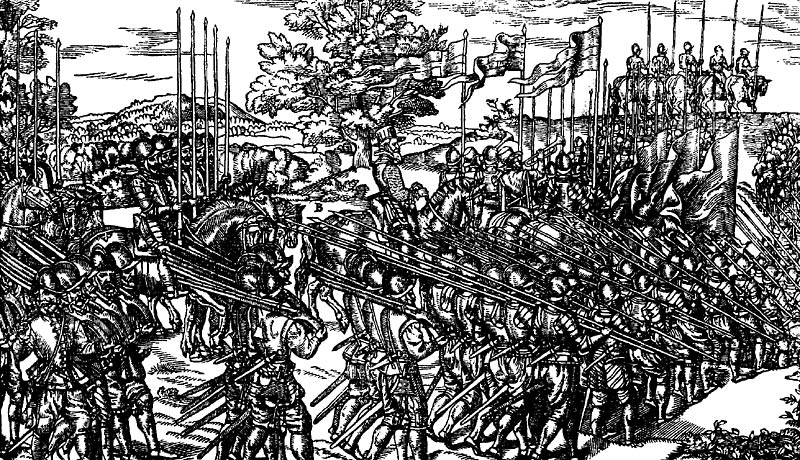Mustering Forces
Topic 6: Mustering Forces
During the reigns of Edward VI and Mary troops were raised in support of the monarchs, against rebels in the north and east of England.
The documents available begin to provide details of the types of forces mustered. In 1557 100 footmen raised for the queen’s army were ¼ equipped with harquebus or bow, ¼ with pike and the remaining half armed with bills.
A mid 16th century army on the march. (Contemporary print held in The British Museum)
During Queen Elizabeth’s reign, county musters were undertaken regularly. In addition soldiers were raised for campaigns in Ireland and Flanders. This is also the first time we have reference to the soldiers of Lindsey being clothed in red.
Between 1586 and 1588 county musters were held as part of the preparations to meet the Armada, along with the disarming of Papists and the building of beacons. In the actual event, the Armada sailed a considerable distance from the Lincolnshire coast. However, the deliverance of the country from the threatened invasion was celebrated in Lincoln and later commemorated (as puritan propaganda) in the 1610 painting “Defeat of the Spanish Armada” by Robert Stephenson, displayed in St. Peter & St. Paul’s church at Bratoft.
Robert Stephenson’s painting of the Armada.
During 1570s we have documentary records of piracy of the coast of Lincolnshire. Complaints are made that the port of Grimsby is receiving stolen goods, that pirates are operating out of the port of Boston and that pirates are lurking in the ‘Boston Deeps’ to prey on local trade.
In 1591, ships were requisitioned by the admiralty to ferry troops to Normandy for the Earl of Essex army, possibly to aide in the siege of Rouen.
At the end of the 16th century, Lincolnshire’s trained bands were in a poor state of training and equipment, and steps were taken to remedy this. Bows were finally removed from the musters in 1595, and the numbers of bills greatly reduced. By 1620 the musters of Lincolnshire were described as having an adequate supply of arms, which by that time was pike and musket.
A well-equipped Elizabethan army on the march. (From The Image of Irelande, with a Discoverie of Woodkarne by John Derricke (1581) held by Edinburgh University Library)



